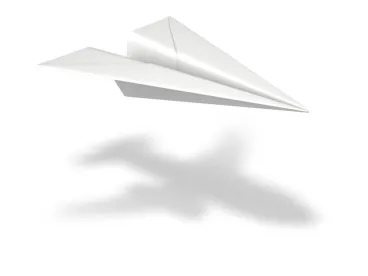On February 15, 2015, the Federal Aviation Administration (“FAA”) announced the release of a Notice of Proposed Rulemaking focused on the Operation and Certification of Small Unmanned Aircraft Systems (“UAS”) or “drones” within the United States. The release of the UAS NPRM is a step in the right direction that many in the industry have been waiting for since the FAA first chartered the small UAS Aviation Rulemaking Committee (“ARC”) in 2008.
While some industries may find aspects of the proposal restrictive (e.g., the line-of-site requirement), many are pleased with the FAA’s initial UAS regulatory effort, which is focused on small UAS or those that weigh less than 55 lbs. The UAS NPRM will at least remove some uncertainty for industry and could trigger more investment in UAS technology. However, the process from release of the UAS NPRM to when a final rule takes effect could take years. Companies looking to operate UAS in the interim are left to navigate one of many current certification processes, which are limited to specific purposes and still involve a bit of uncertainty.
In the meantime, now is the time for companies interested in deploying their UAS technology as well as industries that see an expanded role for the use of UAS (e.g., energy, agriculture, entertainment) to provide FAA with any comments on this proposal and the future of UAS regulation. There will be an opportunity to comment for a 60-day period once the UAS ANPR is published in the Federal Register.
The UAS NPRM – An Overview
The UAS NPRM applies to small UAS, or an unmanned aircraft weighing less than 55 pounds, “including everything that is on board the aircraft”.* The FAA is also considering including a “mircro UAS” classification as well, for those UAS that weigh no more than 4.4 pounds. Under the proposal, the FAA would add a new Part 107 to Title 14, which would prescribe “rules governing the registration, airman certification, and operation of civil small UAS within the United States.” Currently, the entirety of the FAA regulations apply to small UAS, including regulations that don’t necessarily line up with how small UAS are operated. For example, small UAS are unable to see and avoid other aircraft per Part 91. Therefore, new Part 107 would replace the operating limitations of Part 91, as well as the airworthiness provisions of Part 21, as well as the airman certification provisions of Part 61.
With respect to registration, the FAA is proposing to use the current registration process under Part 47. Generally, a small UAS could be registered by submitting to the FAA an Aircraft Registration Application, evidence of ownership, and the $5.00 registration fee.
New Crewmember Positions
The UAS NPRM proposes two new crewmember positions in Part 107 unique to small UAS operations. Much like a “pilot” in a “manned” aircraft, the new term “operator” would refer to a person who manipulates any system or component that affects the flight path of the aircraft. “Operators” would be required to obtain an unmanned aircraft airman certificate with a small UAS rating. Additionally, the FAA defines a “visual observer” as a person who assists the small unmanned aircraft operator in seeing and avoiding other air traffic or objects aloft or on the ground. A “visual observer” would assist in avoidance by augmenting the operator as the person who must satisfy the see-and-avoid and “visual-line-of-sight” requirements that are proposed.
Operator Certificate
As discussed above, proposed Section 107.13 would require small UAS operators to obtain and hold an Unmanned Aircraft Operator Certificate (“UAOC”) with a small UAS rating prior to operating a small UAS. In general, to obtain a UAOC, a person must be at least 17 years of age, be able to read, speak, write and understand the English language, pass a TSA security review, and pass an aeronautical knowledge test. Unlike with typical FAA pilot certifications, those seeking a UAOC would not have to demonstrate “flight proficiency” or “aeronautical experience.”
According to the UAS ANPR, the knowledge test would test:
-
whether the applicant knows the small UAS regulations;
-
whether the applicant “understands how to determine the classification of specific airspace and what the requirements are for operating in that airspace”;
-
whether the applicant “understands flight restrictions” affecting small UAS operations;
-
whether the applicant “understands how to clear an obstacle during flight”;
-
whether the applicant understands “the effects of weather and micrometeorology”;
-
whether an applicant understands “how to calculate the weight and balance”;
-
whether the applicant understands “how to properly respond to an emergency”;
-
the applicant’s understanding of “aeronautical decision-making/judgment and crew resource management”;
-
the applicant’s understanding of “airport operations and radio communication procedures”; and,
-
whether the applicant understands the physiological effects of drugs and alcohol.”
The proposal would require a recurrent knowledge test every 24 months after initial passage of the test. The FAA is requesting comments on whether it should require passage of an FAA-approved training course.
Operating Limitations
The FAA has also proposed operating limitations for small UAS. Specifically, if the UAS ANPR is finalized as it stands, new Section 107.51 would dictate that a small UAS may not exceed 87 knots (100 miles per hour); its altitude cannot be higher than 500 feet (150 meters) above ground level; the minimum flight visibility must be no less than 5 kilometers; and the minimum distance of the small unmanned aircraft from clouds must be no less than 500 feet (150 meters) below the cloud and 2,000 feet (600 meters) horizontally away from the cloud.
The FAA proposal would prohibit operation of a small UAS from a moving aircraft or a moving vehicle (unless the vehicle is moving over water) and prohibit objects from being “dropped from a small unmanned aircraft if such action endangers the life or property of another.”
Line-of-Site Requirement
Aside from the size and speed limitations, one of the most talked about restrictions in the UAS ANPR is the line-of-site requirement. In traditional manned aircraft, the pilot is capable of seeing and hopefully avoiding other aircraft. The FAA proposes that the “operator” and “visual observer” serve this purpose in the context of small UAS operations. Therefore, the UAS NPRM would limit small UAS flights to the “visual line of sight” of the operator and visual observer. The FAA does note that a small UAS operation could use “multiple visual observers to expand the outer bounds of the horizontal circle created by the visual-line-of-sight requirement.” As line-of-site standards go, proposed Section 107.31 would require that the operator or visual observer be able to:
-
know the small UAS’s location;
-
determine the small UAS’s attitude, altitude, and direction;
-
observe the airspace for other air traffic or hazards; and
-
determine that the small UAS does not endanger the life or property of another.
The FAA believes current technology is insufficient to demonstrate line-of-site and the UAS NPRM prohibits the use of binoculars, onboard cameras, and other vision-enhancing devices to satisfy the requirement. That being said, the FAA is soliciting input/suggestions from stakeholders “for other ways in which a first-person-view device could be used by the operator without compromising the risk mitigation provided by the proposed visual-line-of-sight requirement.”
Confirming Condition for Safe Operation
The UAS NPRM also addresses how, absent a requirement to obtain an airworthiness certification, the FAA plans to ensure that small UAS are in a condition for safe operation. Specifically proposed Section 107.21(b) would require that the operator inspect the small UAS to ensure that it is in a condition for safe operation prior to each flight. Section 107.15(a) then prohibits operation of a small UAS unless it is in a condition for safe operation. If a small UAS becomes unsafe during flight (due to collision, malfunction, or other issues), Section 107.15(b) requires that the operator discontinue the flight.
If all is well with the small UAS, the operator must also consider the surrounding environment. Specifically, proposed Section 107.49 requires that, prior to flight, a small UAS operator must “assess the operating environment, considering risks to persons and property in the immediate vicinity.”
Looking Forward
It is certainly an exciting time for the UAS manufacturing industry and all industries that may use UAS to enhance the efficiency of their operations. While the UAS ANPR is a good start, like any rulemaking process, it can benefit enormously from stakeholder input. The FAA is inviting comments on a variety of issues and will accept input for a 60-day period after the UAS ANPR is published in Federal Register.
* As proposed, Part 107 would not cover the following small UAS: (1) air carrier operations; (2) external load and towing operations; (3) international operations; (4) foreign-owned aircraft that are ineligible to be registered in the United States; (5) public aircraft; (6) certain model aircraft; and (7) moored balloons, kites, amateur rockets, and unmanned free balloons



 />i
/>i

